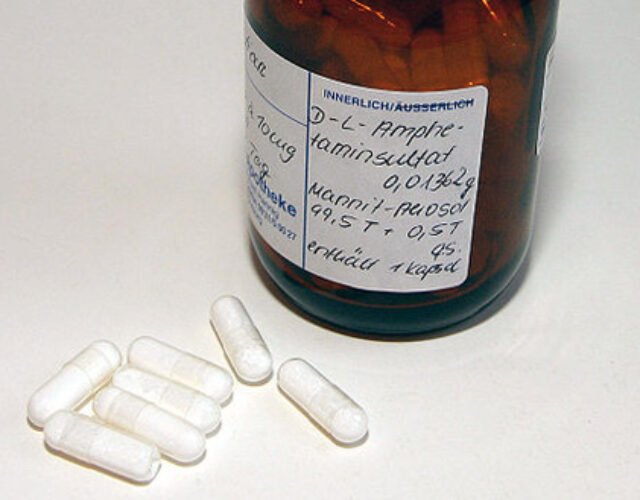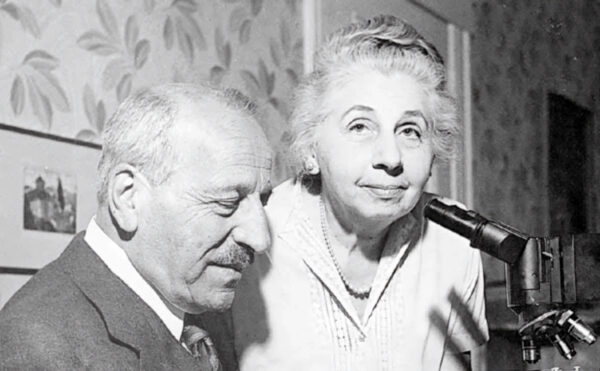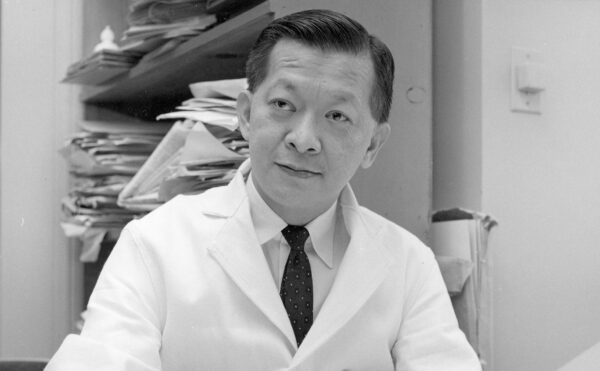Nicholas Rasmussen. On Speed: The Many Lives of Amphetamine. New York: New York University Press, 2008. 400 pp. $29.95.
Three recent histories—Andrea Tone’s Age of Anxiety, Daniel Herzberg’s Happiness Pills and Ned Shorter’s Before Prozac—ccover the emergence in the 1950s of a “Madness for Miltown,” a popular brand name for meprobamate, a best-selling tranquilizer. In the 1960s the craze was for benzodiazepines—mother’s supposed little helpers. All three authors note that the new drugs were better and safer than the barbiturates they replaced; Shorter goes so far as to say that meprobamate and the benzodiazepines were among the most effective medications ever created. But astonishingly these books only briefly cover the amphetamines—if at all. Whether in pure form, as Dexedrine or Benzedrine, or in combination with barbiturates, as in Dexamyl, amphetamines long antedated the tranquilizers and heavily outsold them as late as the 1960s.
It is difficult to account for this blind spot. Is it lack of political drama? The benzodiazepines ran into trouble in the English-speaking world, with media accounts of the horrors of unwitting addiction, betrayal by the medical profession, and a series of congressional hearings. This didn’t happen with the amphetamines. They did eventually fall out of favor and became controlled substances, but one has the impression that this was almost as a side effect of actions involving the benzodiazepines and psychedelic drugs: amphetamines seem almost to have been a convenient scapegoat. More recently amphetamines have made a comeback, largely as a treatment for the increasing numbers of children and adults who are being given diagnoses of attention-deficit hyperactivity disorder (ADHD). In both its diagnosis and treatment, ADHD offers plenty of drama and debate, especially in its lopsided demographic of male children and adult women: it is the only disorder in medicine that shows such an astonishing age-related gender switch.
Chemically, the comeback of the amphetamines is surprising in that there are no new drugs here. The best-selling amphetamines today are extended-release forms or isomers of older drugs. We as a society also seem to have an intriguing capacity to view the clinical uses of amphetamines as benign enough for children, while at the same time viewing closely related compounds like crystal meth and cocaine as a scourge upon our future. In contrast, the benzodiazepines have no close relatives that can be regarded as dangerous, yet Valium now casts a darker shadow than Dexedrine or Ritalin or Prozac.
For these reasons and many more, I have been waiting for a book like On Speed for years. It is extraordinary that there has been no good history of a group of drugs that has been influential for both clinical practice and the wider culture for over 75 years. The antidepressants and antipsychotics, in contrast, had barely begun to register on the radar of public consciousness when books detailing their origins began to appear.
But the wait for this book has been worth it, not just because it is well-written but also because the story will be so unexpected for many people. Nicholas Rasmussen’s discovery narrative for Benzedrine outlines vast differences in the way drugs were discovered in the past and present. But those unfamiliar with any aspect of this history will be equally surprised to find themselves, at least initially, in the midst of a story about efforts to find a treatment for asthma and other respiratory problems.
Soon, however, the drug’s manufacturer began looking for broader applications (and therefore larger markets). In the 1940s and 1950s we see the pharmaceutical firm of Smith, Kline, and French promoting the views of Tufts University psychiatrist Abraham Myerson on the response of people with anhedonia (the inability to experience pleasure) to amphetamines. Similarly Smith, Kline, and French’s marketing campaign depended heavily on recruiting experts to persuade general practitioners that a large number of their patients might have psychosomatic problems that would respond to amphetamines. Rasmussen makes a good case that this was an early example of disease mongering. But he also notes that the drugs were openly advertised as antidepressants, creating another surprise: why is it that no history of antidepressants includes any reference to the amphetamines?
All of this should sound very topical to modern readers, as will a host of other revelations about links between industry and academia. As early as the 1950s Smith, Kline, and French appears to have been ghostwriting articles for doctors and drawing up research contracts with academics that enabled them to block the publication of inconvenient research findings. In recent months the media have been full of stories on the conflicts of interest that link academic medicine to industry. Many are beginning to wonder whether medicine is in a state of terminal decline. Since 1990, however, these interests have been declared, at least to some extent. Consider, instead, the case of Soma Weiss, a professor of medicine at Harvard University and chair of the American Medical Association’s Council on Pharmacy Approval. Rasmussen details how Weiss, without acknowledging the five-year grant he had received from Smith, Kline, and French for his clinic in Boston, endorsed Benzedrine as one of the most promising drugs ever developed in a 1939 review article on pharmacology. As Rasmussen makes clear, there has never been a golden age when medicine was free of the pharmaceutical industry. The question instead is whether something about the relationship has changed or whether we are simply witnessing an almost predictable periodic upsurge of medical Puritanism.
This book is much more than a discussion about the discovery of a treatment for asthma.




